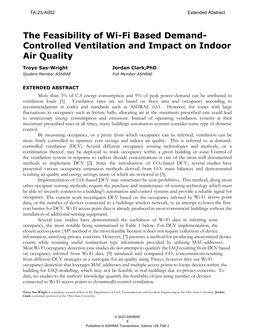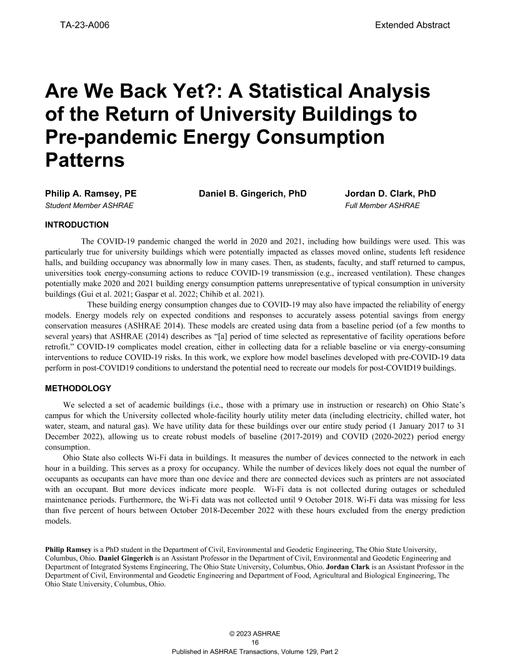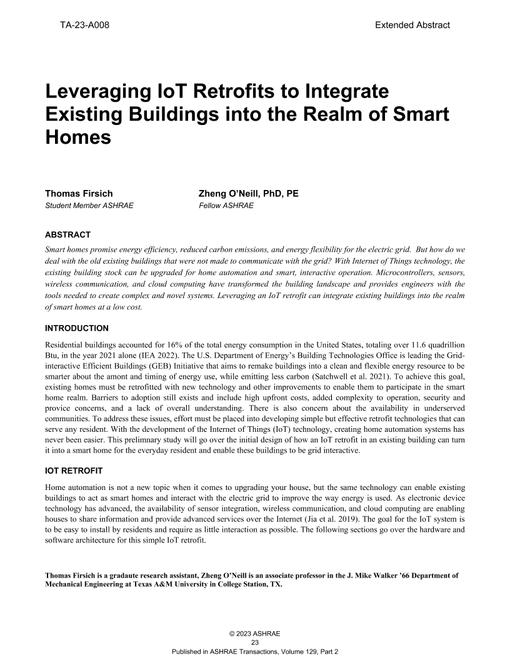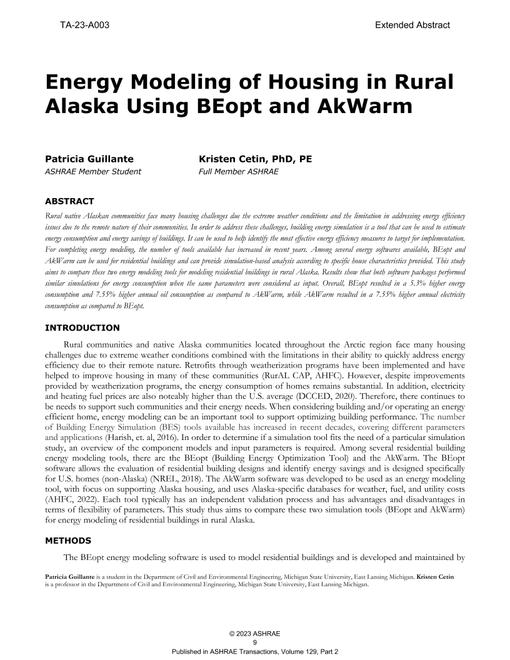-
-
Available Formats
- Options
- Availability
- Priced From ( in USD )
-
Available Formats
-
- Immediate download
- $16.00
- Add to Cart
Customers Who Bought This Also Bought
-

TA-23-A002 – The Feasibility of Wi-Fi Based Demand-Contro...
Priced From $16.00 -

TA-23-A006 – Are We Back Yet?: A Statistical Analysis of ...
Priced From $16.00 -

TA-23-A008 – Leveraging IoT Retrofits to Integrate Existi...
Priced From $16.00 -

TA-23-A013 – Model Free Control for Non-Uniform Indoor En...
Priced From $16.00
About This Item
Full Description
Rural native Alaskan communities face many housing challenges due the extreme weather conditions and the limitation in addressing energy efficiency issues due to the remote nature of their communities. In order to address these challenges, building energy simulation is a tool that can be used to estimate energy consumption and energy savings of buildings. It can be used to help identify the most effective energy efficiency measures to target for implementation. For completing energy modeling, the number of tools available has increased in recent years. Among several energy softwares available, BEopt and AkWarm can be used for residential buildings and can provide simulation-based analysis according to specific house characteristics provided. This study aims to compare these two energy modeling tools for modeling residential buildings in rural Alaska. Results show that both software packages performed similar simulations for energy consumption when the same parameters were considered as input. Overall, BEopt resulted in a 5.3% higher energy consumption and 7.55% higher annual oil consumption as compared to AkWarm, while AkWarm resulted in a 7.55% higher annual electricity consumption as compared to BEopt.





